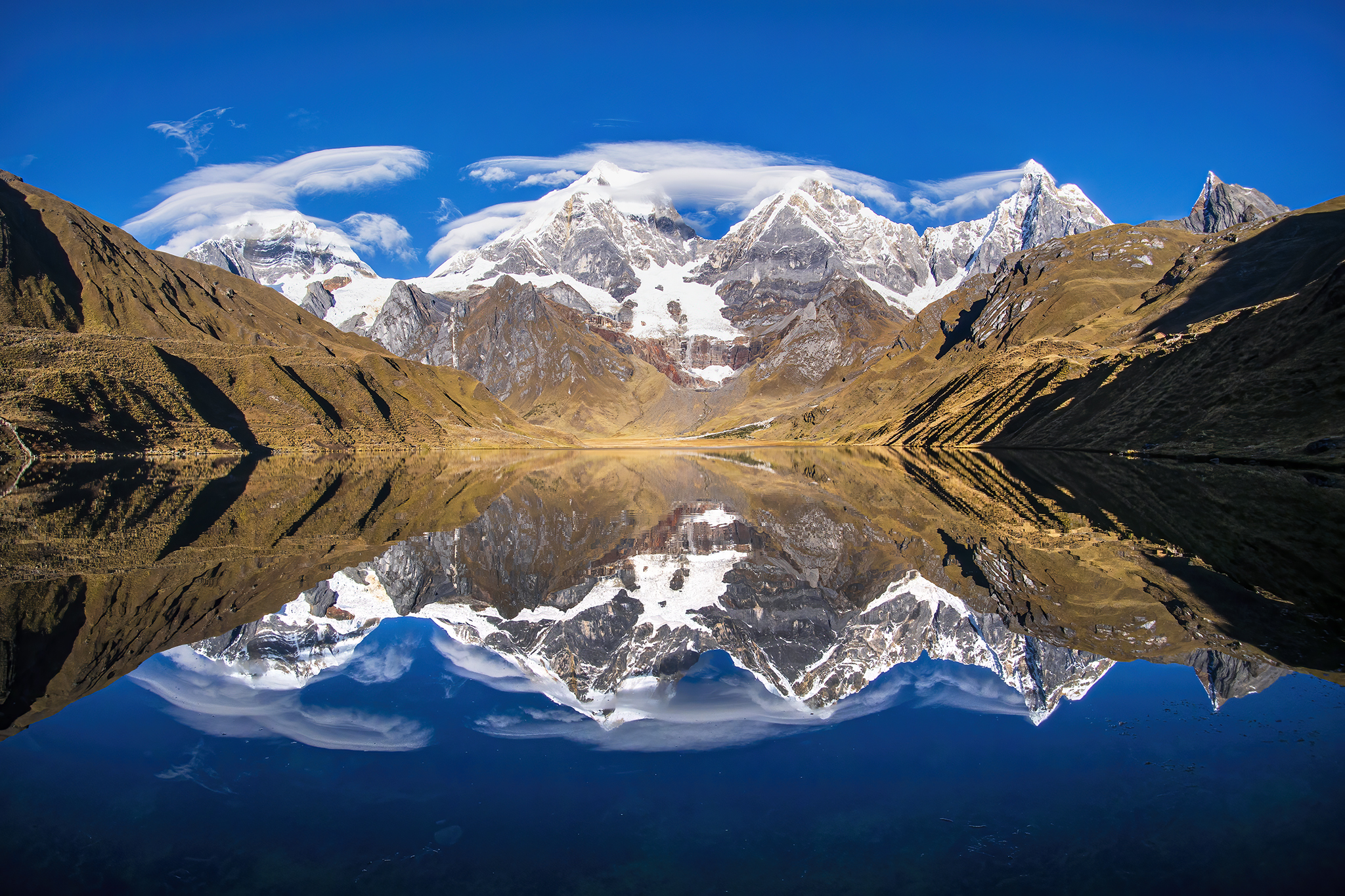If you’re looking for some of the world’s most incredible landscapes, hidden away from hordes of tourists, then Peru’s Huayhuash Circuit is one for the bucket list – but be warned, this hike will make you work for its views.
Located around three hours south of the city of Huaraz, the Cordillera Huayhuash is often regarded as one of the top multi-day hikes on the planet, but remains relatively untouched (compared to Machu Picchu’s Inca Trail for example) due to its remoteness. Like most hikers, we opted for the eight-day trek, although it can be explored for anywhere between six days and two weeks depending on your fitness level and how much of the region you want to see.
Tours can be arranged from Huaraz, and represent the best option if you have any doubts about your fitness or experience. They’ll cook all your meals for you and provide donkeys to carry your bags – but be prepared to pay for these luxuries. On the other hand, with the right preparation, the circuit can most definitely be tackled unescorted…

On account of its remoteness, I wouldn’t recommend doing the Huayhuash Circuit alone (unless you have plenty of high-altitude hiking experience), but Huaraz’s many hostels are home to lots of like-minded hikers who are always looking for company. There are also a number of rental companies which hire out all of the gear you will need, and the local supermarkets are well stocked. Even if you rented all of your equipment and bought all of your food, you’d still end up paying around half the price of a tour.
However, there are definitely moments on the trek that will make you question why you didn’t part ways with that extra cash, or why you didn’t opt for a week of lying on a Peruvian beach instead. Carrying sleeping bags, tents, clothing and eight days worth of food borders on torturous at times. Overnight temperatures drop well below zero and some of the brutal mountain passes reach 5,000m above sea level, leaving you breathless at best, and dangerously sick at worst.
Huayhuash certainly isn’t for the faint of heart, but it also comes with a genuine sense of satisfaction, some unbelievable views, and if you’re lucky, some friendly dogs that want to walk with you!

One of the absolute highlights of the Huayhuash Circuit is the Mirador de las Tres Lagunas – the three-lakes lookout. After climbing a hellish ascent for a few hours on day three of the trek, you arrive at this utterly breathtaking spectacle.
The three vibrant turquoise lakes lie beneath an imposing glacier and a collection of the Cordillera Huayhuash’s highest peaks – including the mighty Yerupajá, Peru’s second-tallest mountain, and the infamous Siula Grande, host of the 2003 survival documentary Touching the Void.
This scene illustrates the striking contrasts of the Huayhuash Circuit – stunningly beautiful landscapes that push you to your absolute physical limits (or at least, my absolute physical limits).

One of the most challenging parts of the Huayhuash Circuit is the Trapecio Pass, a tough ascent to just above 5,000m above sea level on day four which represents the highest point of most hiking routes in the region. While every instinct in your body will be telling you at that point to start heading down to a place where you can breathe somewhat normally again, it is vitally important that you ignore those instincts, turn off the main trail, and climb another 100m upwards.
In turn, you will be rewarded by an eerie Martian-like landscape under your feet, a gigantic glacier stretching out before you, and a series of jagged snowy summits piercing the horizon.
The view is one of the most spectacular sights of the Huayhuash Circuit and presents mother nature in all her raw and perilous glory.

To conclude our series on the Cordillera Huayhuash, I wanted to share my favourite photo from the entire eight days of hiking. It’s not quite as visually striking as some of the others, but the reason it’s my favourite is because it was taken shortly after being pushed about as close to my physical limit as I had ever been pushed.
In order to squeeze in a visit to Siula Grande’s base camp, located a few hours off the main trail, we decided to press hard on day four of the trek and complete two 5,000m passes in one day. This photo was taken at the top of the second one, the Santa Rosa Pass, which I had only managed to complete by putting my headphones on and continuously putting one foot in front of the other to the beat of my music until I had reached the top. My legs and lungs both felt like they were about to give up on me at any moment throughout the entire ascent.
But reaching that highest point and seeing the dying golden light bouncing off the icy Andean peaks made it all worth it, and the exhaustion was suddenly replaced with pure elation.
This burst of energy was probably for the best given that our camp for the evening turned out to still be a further hour and a half away, along paths that towed the line between treacherous and outright dangerous. Thankfully, we made it to the campsite just as we needed to turn our headlamps on, bringing an end to the toughest and most exciting day of the Huayhuash Circuit.


